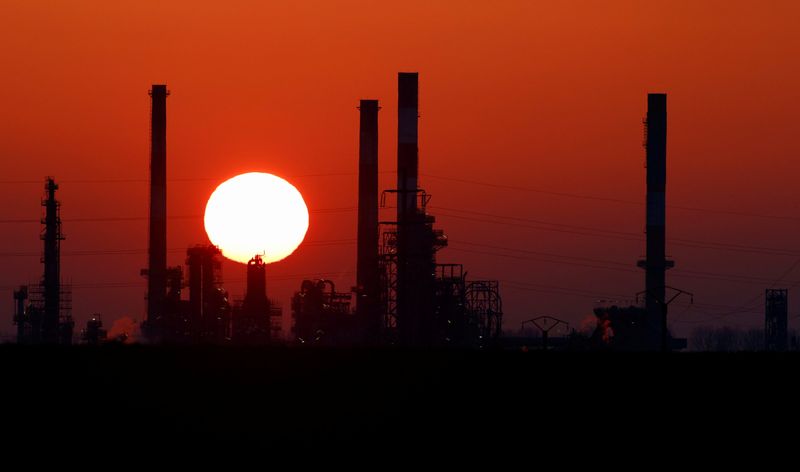By Georgina McCartney
HOUSTON (Reuters) -Oil prices fell about 3% in 2024, falling for the second year in a row, as the recovery in demand from the pandemic stalled, China’s economy struggled and the U.S. and other non-OPEC -producers pumped more crude oil into a well- supplied world market.
futures on Tuesday, the last trading day of the year, closed down 65 cents, or 0.88%, at $74.64 a barrel. U.S. West Texas Intermediate (WTI) crude rose 73 cents, or 1.03%, to $71.72 a barrel.
The Brent benchmark fell about 3% from the 2023 close of $77.04, while WTI was roughly flat from last year’s final settlement.
In September, Brent futures closed below $70 a barrel for the first time since December 2021, and this year Brent traded broadly below the highest levels in recent years as demand recovery from the pandemic and price shocks from Russia’s invasion of Ukraine in 2022 started to disappear. fade.
Oil is likely to trade around $70 a barrel in 2025 due to weak Chinese demand and rising global supply, offsetting OPEC+-led efforts to support the market, a monthly Reuters poll showed on Tuesday.
In particular, weaker demand prospects in China forced both the Organization of the Petroleum Exporting Countries and the International Energy Agency (IEA) to lower their oil demand growth forecasts for 2024 and 2025.
The IEA expects the oil market to enter 2025 in surplus, even after OPEC and its allies postponed their plan to increase production until April 2025, amid falling prices.
U.S. oil production rose 259,000 barrels per day in October to a record high of 13.46 million barrels per day, while demand rose to the strongest level since the pandemic, data from the U.S. Energy Information Administration (EIA) showed on Tuesday.
Production is expected to rise to a new record of 13.52 million barrels per day next year, the EIA said.
ECONOMIC, REGULATORY OUTLOOK
Investors will be keeping an eye on the Federal Reserve’s rate-cutting outlook for 2025, after Fed policymakers this month forecast a slower path due to stubbornly high inflation.
Lower interest rates generally stimulate economic growth, which fuels energy demand.
Some analysts still believe that supply could shrink next year depending on President-elect Donald Trump’s policies, including sanctions policy. He has called for an immediate ceasefire in the war between Russia and Ukraine, and he could reimpose a so-called maximum pressure policy on Iran, which could have major consequences for oil markets.
“With the possibility of tougher sanctions on Iranian oil with Trump in office next month, we are looking at a much tighter oil market in the new year,” said Phil Flynn, senior analyst at Price Futures Group, also citing improving Indian demand. and recent stronger Chinese manufacturing data.
China’s manufacturing activity grew for a third straight month in December, albeit at a slower pace, indicating that a raft of new stimulus measures is helping to support the world’s second-largest economy.
The US military said on Tuesday that prices were rising and that it was carrying out attacks on Houthi targets in Sanaa and coastal areas in Yemen on Monday and Tuesday.
The Iran-backed militant group has been attacking commercial shipping in the Red Sea for more than a year in solidarity with the Palestinians amid Israel’s years-long war in Gaza, threatening global oil flows.

Meanwhile, oil inventories fell last week while fuel stocks rose, market sources said, citing American Petroleum Institute figures on Tuesday.
Crude inventories fell by 1.4 million barrels in the week ended December 27, the sources said on condition of anonymity. Gasoline stocks rose by 2.2 million barrels, and distillate stocks by 5.7 million barrels, they said.


